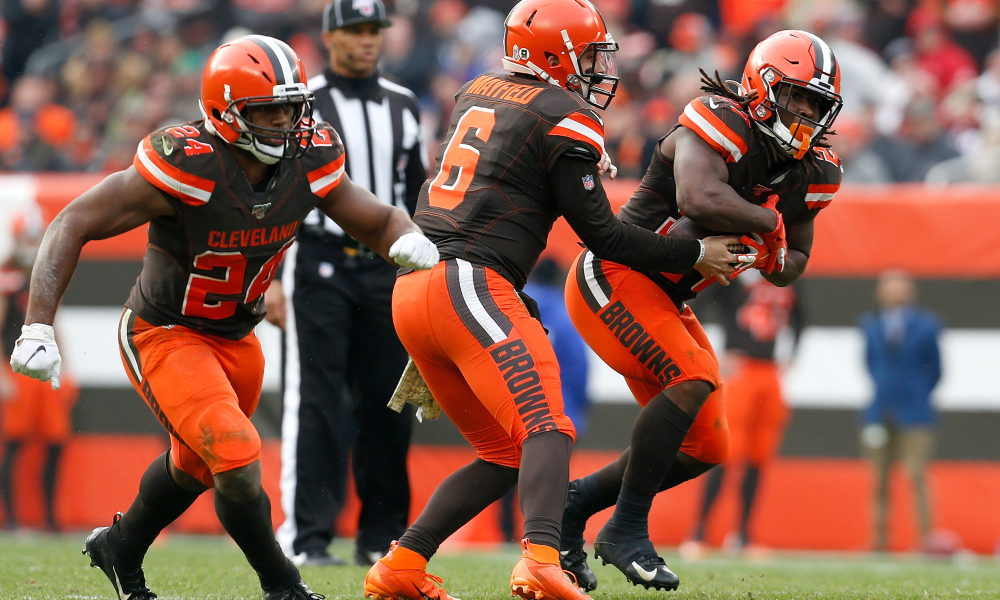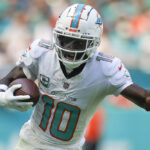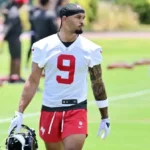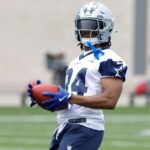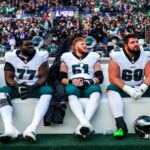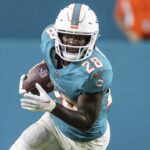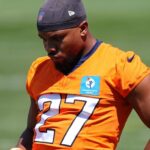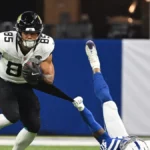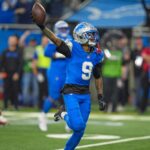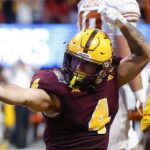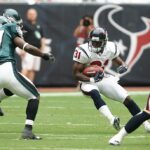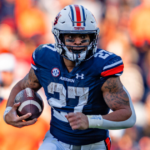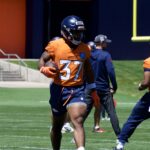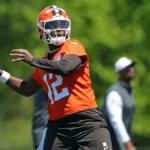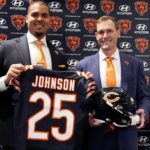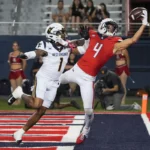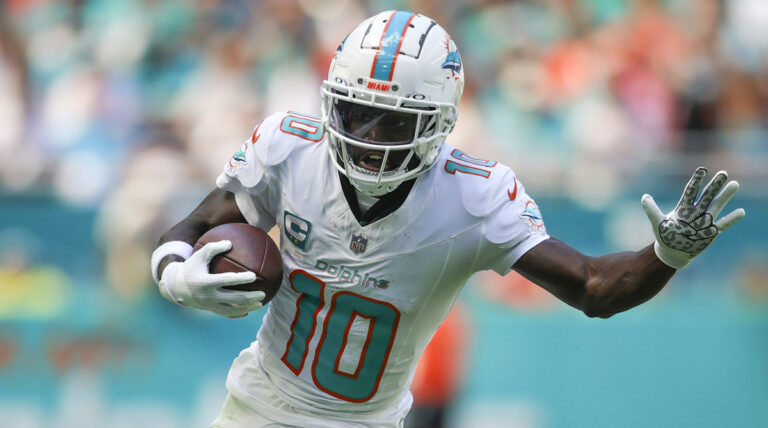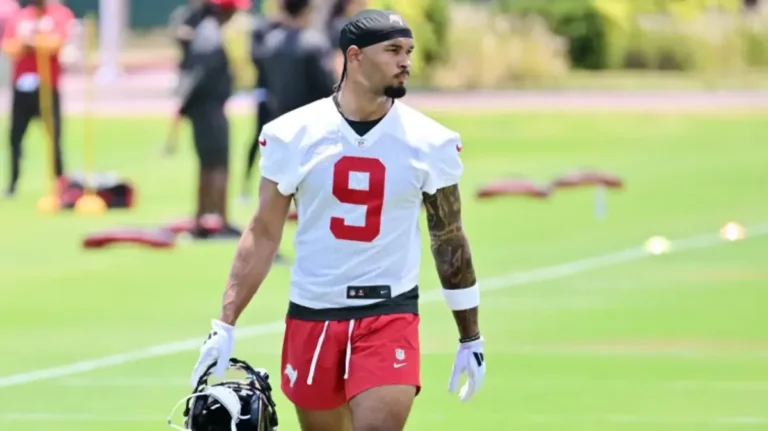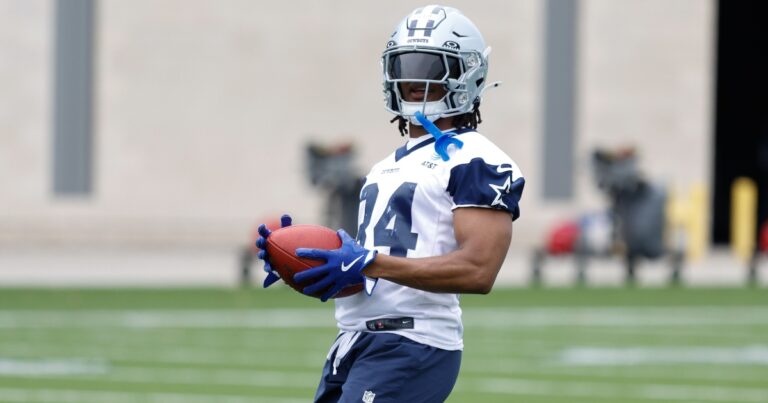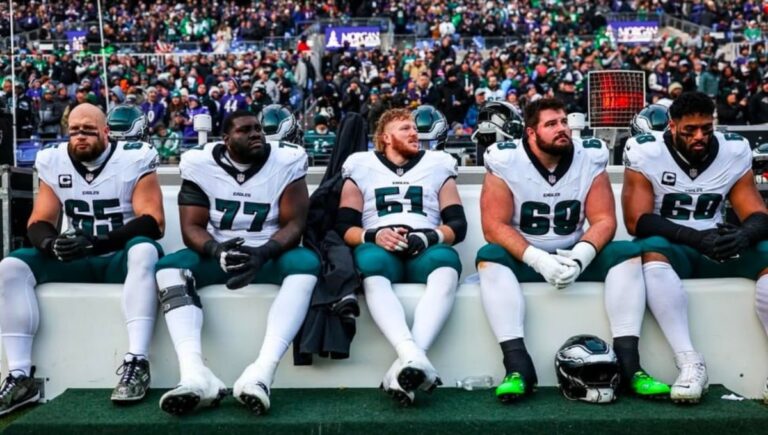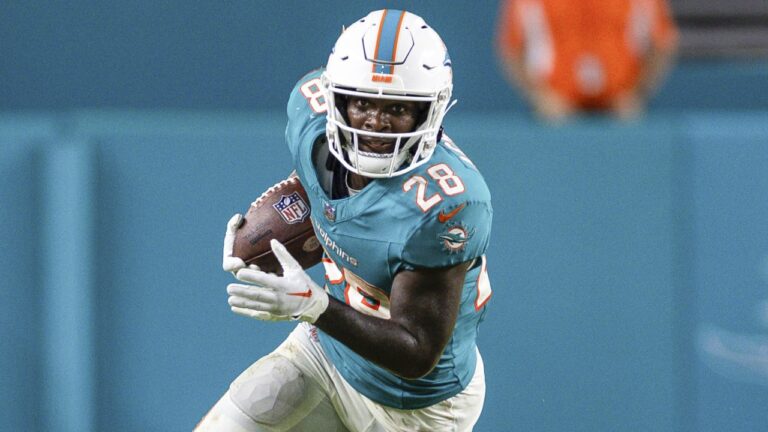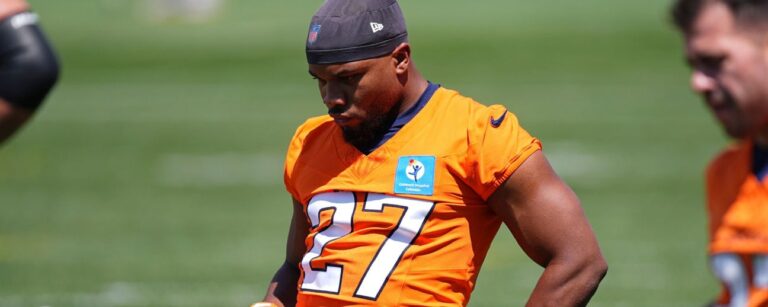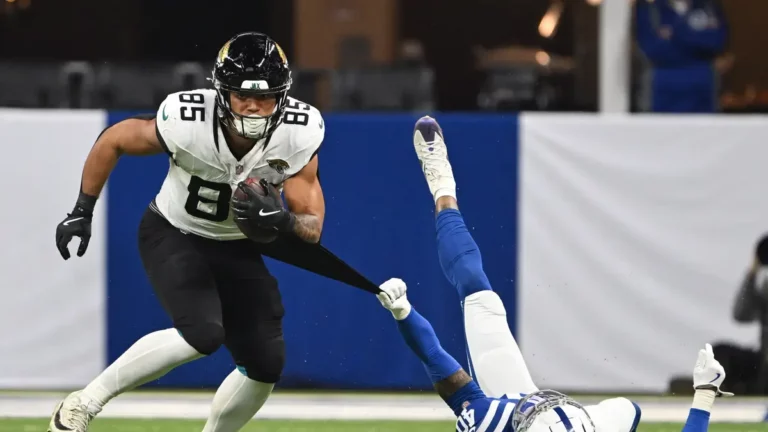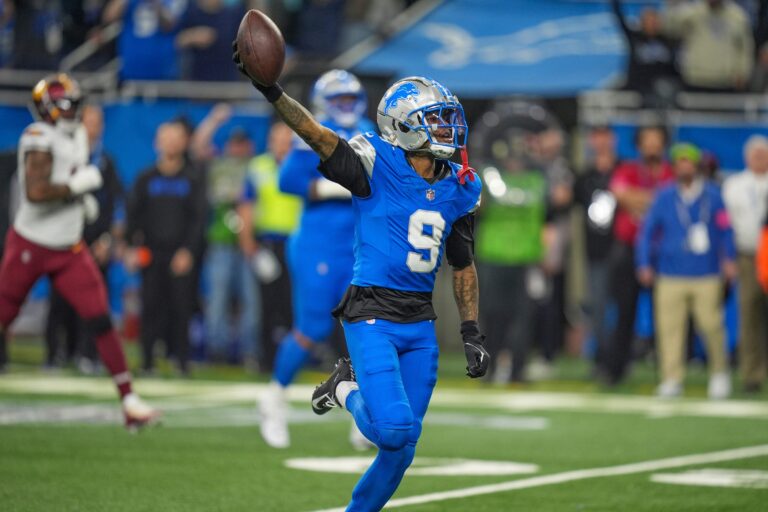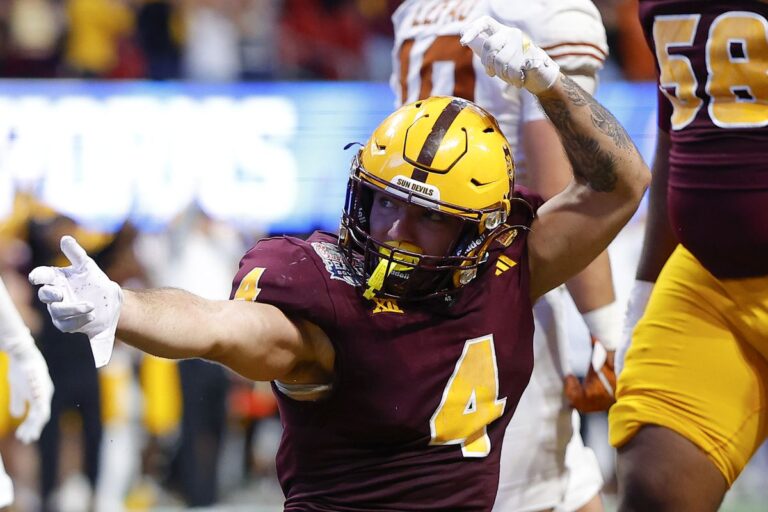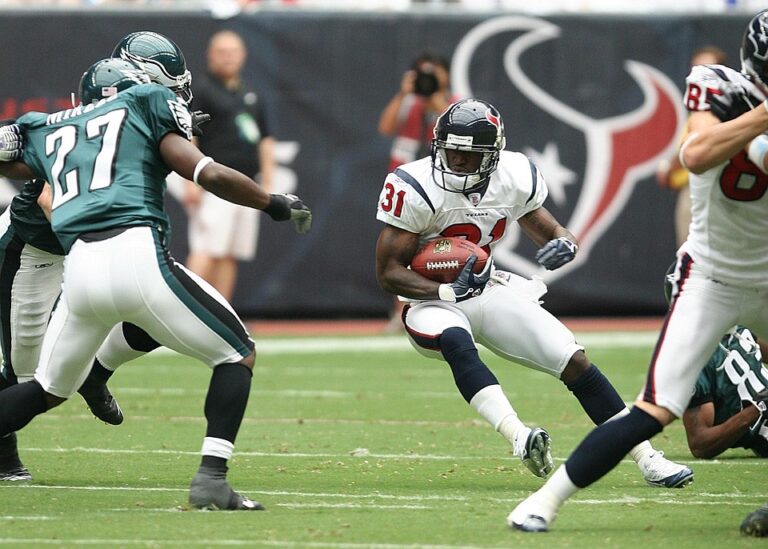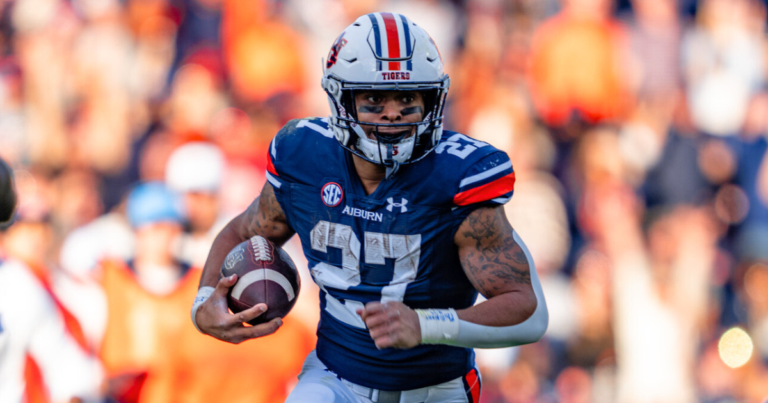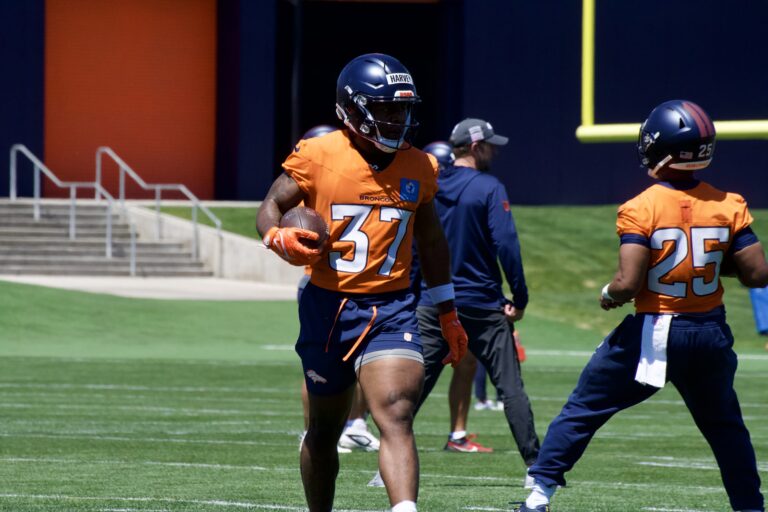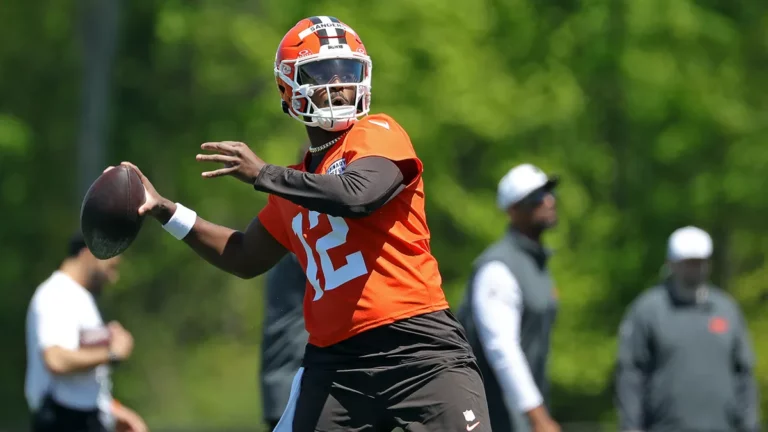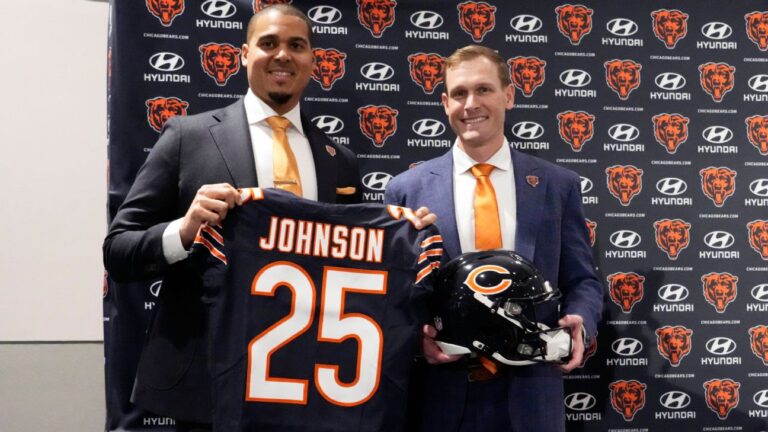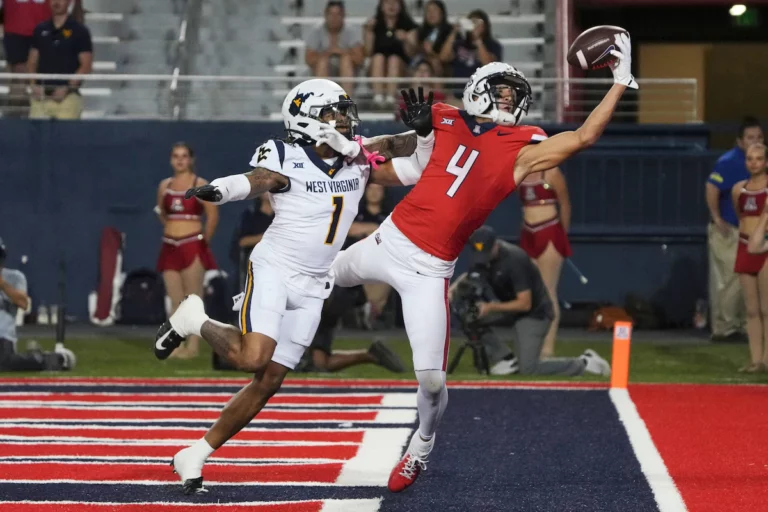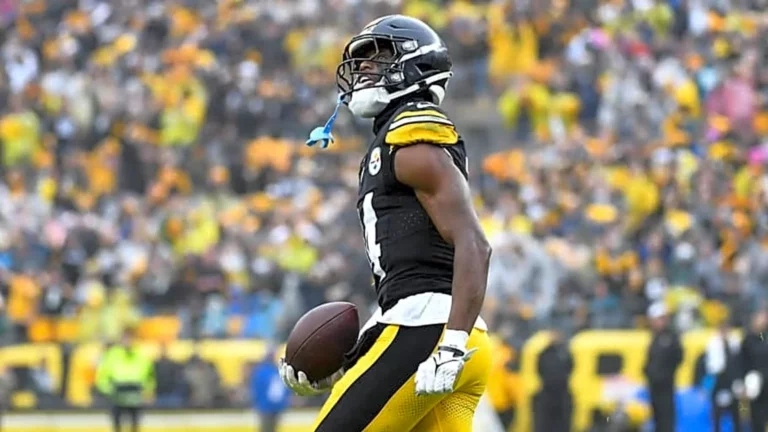All 2020 offseason, fantasy owners clamored for Kareem Hunt, then a RFA, to find greener volume pastures. We frothed at the mouth (and between the legs) as we imagined Hunt filling the vacant Bucs “Value Hole.”
Not only would Hunt, a Top-10 RB talent, see the usage he deserved… Nick Chubb would also be fully freed!
Alas, our prayers went unanswered. Hunt returns to the Browns for 2020, and even hopes to sign a contract extension with the team. For dynasty sakes, let’s hope to all that’s holy that this isn’t the case.
Still, in 2020, while the Browns backfield is more crowded than us fantasy owners prefer, both Chubb and Hunt will still feast.
In fact, now within Kevin Stefanski‘s zone blocking scheme, I expect Chubb to lead the NFL in rushing yardage. Meanwhile, Hunt redefines “Handcuff with Benefits,” offering highly-usable PPR upside, with league-winning potential should Chubb go down.
Here’s why:
Positive No.1: Both are Elite Backs
Chubb and Hunt are, by far, the best RB tandem in the NFL.
The Cleveland #Browns Backfield
Nick Chubb — PFF Grade Rank
2018: 1st of 76
2019: 1st of 78Kareem Hunt — Missed Tackles Forced per Touch Rank (PFF)
2016: 1st of 123
2017: 4th of 71
2018: 2nd of 73
2019: 1st of 75— Scott Barrett (@ScottBarrettDFB) June 24, 2020
If Chubb isn’t the best pure runner in the league right now, he’s at least in the conversation. Elite vision and instincts, both through the hole and especially at the second level. Impressive contact balance and tackle-breaking abilities. Uncanny acceleration and breakaway speed for his thick 227 lbs frame.
Unsurprisingly, he’s earned PFF’s top rushing grade in both of his professional seasons. Behind a vastly improved line and within the same zone-blocking scheme that helped facilitate Dalvin Cook’s monster (more on both of these later), Chubb will lead the NFL in 2020 rushing.
Chubb’s also a fully capable receiver: passes sent his way in the NFL have produced a passer rating of 99.5, and he’s broken 18 tackles on 56 receptions
Still, Hunt is near-equal of a rushing talent as Chubb — he’s only two seasons removed from earning the NFL rushing crown as a rookie (1,327). Hunt’s also the superior pass catcher. Despite missing nearly a full season (roughly half of 2018 & ’19), Hunt is still second in missed forced tackles since 2017, trailing only Derrick Henry. (Ironically, Chubb leads the league in this stat since entering the league in 2018).
Hunt’s also a pristine route runner, as his tree has all the branches, while he’s incredibly dangerous in the screen game. Hunt was on pace for 90 targets and nearly 70 receptions, and finished third on the brown in receptions (37) and receiving yardage (285) despite missing half the season.
In short, both backs are supreme talents, and will thrive on whatever the volume they receive.
Negative No.1: Sharing the Work
Which brings us to our first negative: this will undoubtedly be a shared backfield in 2020.
Usage is the engine to fantasy success, especially at the RB position. Both Browns backs are simply too good to keep one off the field completely. If both remain healthy, they’ll undoubtedly nibble one another’s cheese all season.
We saw this consistently once Hunt returned from his suspension last year:
First, raw snaps (via @NickPenticoff).

Clearly, Week 10 onward presented a much more tangled snap web. Prior, Chubb had never dipped below 60% of the snap share, which happened in 4/8 games with Hunt back.
Naturally, this impacted usage and thus production. Explained by RotoViz’s Curtis Patrick in his excellent “Must Draft RBs” piece:
“Nick Chubb was RB5 on a per-game basis in weeks 1-9, holding a firm grasp on team backfield market share and carrying his fantasy owners to early-season wins with scorching 19.66 PPR per game fantasy production. Despite Chubb’s early-season dominance, the Browns recognized that Hunt could add a new element to the offense, and they handed him the keys to the backfield receiving work immediately.”

Chubb’s 2019 fantasy production was cut by nearly 35% after Hunt returned from suspension.
In fact, although Chubb outscored Hunt in raw FPs when on the field together (103.8, RB15 vs. 101.4, RB17), Hunt was far more often the superior fantasy play, outscoring Chubb in 6/8 weeks (PPR):
Browns Highest-Scoring RB by Week (PPR)
W1: Chubb
W2: Chubb
W3: Chubb
W4: Chubb
W5: Chubb
W6: Chubb
W7: BYE
W8: Chubb
W9: Chubb~Kareem Hunt returns from suspension~
W10: Hunt
W11: Hunt
W12: Chubb
W13: Hunt
W14: Hunt
W15: Chubb
W16: Hunt
W17: Hunt— Scott Barrett (@ScottBarrettDFB) May 29, 2020
Granted, the narrative flips a bit in half-PPR, where Chubb was superior in 5/8 weeks.
Still, the disparity between these two backs was far closer than their ADPs — Chubb a borderline first rounder, Hunt a middling 6th — suggest.
Chubb out-touched Hunt 155 to 80 during this span. He remained the primary bellcow rusher, dipping only slightly from 19.25 carries per game to 18. His total touches fell from 22.4 to 19.4 — still a hefty workload, considering Joe Mixon saw 19.6 touches in workhorse duties.
Yet, it was Chubb’s complete erasure of receiving work that was damning. Receptions are infinitely more valuable to fantasy success, and Chubb’s target share dropped from ~12% to under 5%, a difference of 4.5 targets per game to barely over 1.
Undoubtedly, we’re headed for a timeshare in 2020. This seems pretty damning for Chubb, at least at his current price tag.
YET, we must also consider:
Positive No.2: Improved Line & Scheme
This offense is going to be a DREAMBOAT for whoever is in the backfield at any given moment.
While last year’s workload division may remain similar, the production could be vastly different in a far superior situation for both backs.
A) Stefanski’s Zone Scheme & “Ground Pie”
For one, new HC Kevin Stefanski‘s zone blocking scheme is tailor-made for both backs, particularly Chubb.
Just look at Dalvin Cook last year. Yes, he’s an elite talent. Yet, Stefanski’s commitment to the run, and the zone-blocking scheme, helped Cook finally reach his ceiling (2nd in FPPG).
What exactly is the zone run game?
Beautifully explained in detail here and here, the zone running is all about the lineman moving in sync and blocking an area more-so than a man. This involves plenty of double teams at the point of attack, which then break off at the defense’s second layer. The goal is to create gaping lanes, whether on the playside, or through a cutback if the defense is over-aggressive. A relentless, well-executed zone running game is a gorgeous symphony to watch.
It also facilitates monster stats for the right back. Hell, even mediocre no-names like Olandis Gary and Mike Anderson posted monster seasons under Kubiak, while elite talents set records. Runners first need the vision to find the right lane and course of action (bang, bounce, or bend). Next, they need acceleration and decisiveness to make the cut and go.
Enter Chubb and Hunt. Both excel in every facet, but especially Chubb. If he maintains the ~18 carries he saw sharing the backfield with Hunt (Cook averaged 17.9), Chubb will threaten for the league lead in rushing. Meanwhile, Hunt will similarly eat on his smattering of 8-12 totes.
That volume isn’t impossible. Stefanski’s Vikings ranked 4th in the NFL in rush attempts. Alongside Baltimore and San Francisco, the Browns were one of only three teams to run more than they passed. The Ground Pie was huge in Minnesota, and could be even larger in Cleveland, considering Hunt’s far superior than Vikings No.2 Alexander Mattison.
B) A Vastly Improved Line
Anchored by LG Joel Bitonio and C JC Tretter, the Browns were solid along the interior line in 2019.
They also rolled out the worst tackle combination in the NFL.
A makeover at the edges was necessary, and boy did Cleveland go all-in. In fact, PFF labels them the most improved offensive line in the league.
At right tackle Chris Hubbard, PFF’s single-worst graded run blocking starting tackle (38.5) is replaced by the prized jewel of the 2020 FA Lineman crop, Jack Conklin. Conklin ranked 6th among all tackles in run-blocking (83.7), and will easily be the best T Chubb has run behind. The Titans were among the league leaders in zone-running, so Conklin is well versed in the scheme.
Meanwhile, at LT, Greg Robinson was below average, middling out at a 62.8 PFF run blocking grade. He’ll be replaced by rookie Alabama OT Jedrick Wills, who graded out a 90.5 in run blocking and was selected 10th overall as the second tackle in a loaded class.
New line coach Bill Callahan, one of the most respected at his craft with four decades of experience at the position, labeled Wills their No.1 prospect. Stefanski agreed, especially given Wills’ insane athleticism, labeling the mauler a perfect schematic fit.
“He’s solid, he has athletic ability, but with Jedrick, it was a little different in that you could feel him on film. He came alive on tape.. I liked his makeup. I like his tenacity, his toughness, his intelligence, and then not to mention that he is a scheme fit for our team. Great movement skills. Plays with a nastiness.
“Yeah, I think that is a big part of his game is his athleticism… movement skills that what you saw on tape was legit…we really felt very comfortable that we were getting a guy that certainly fits our scheme and certainly fits our building. The first time you turned on the tape, I could envision this kid playing in our scheme and playing for our team.”
Standing at a whopping 6-foot-5, 320 lbs, Wills blazed an insane 5.05 (85th percentile).
Athleticism is essential for success in the wide zone scheme, and Wills possesses it in droves. In fact, according to PFF, who compared him to Lane Johnson Wills is:
- One of the nastiest run blockers in the country. Leads tackle class in big-time blocks
- Explosive no matter what he’s doing. Moves more like a DL than OL
- Very agile for a big fella. Handles stunts easily
- Can execute any block or blocking scheme you ask
- One of the most explosive and agile offensive tackles you’ll ever see.
Suffice to say, the Browns project to go from the NFL’s worst tackle duo, to one of the best. This should vault the Browns from their 23rd PFF Line Ranking into a potential Top-10.
The fact Chubb was only 45 yards shy of leading the NFL in rushing, behind this piss poor unit, in an ugly scheme is a glowing testament to his own ability. He is about to see the widest lanes of his career, and he will exploit them to perfection.
Ideally, these wider lanes will help Chubb especially in the Red Zone, where he was already due for positive TD regression:
48% of inside-the-five carries resulted in a TD last season
RBs below that rate due for positive TD regression
– Nick Chubb (2/15)
– Saquon Barkley (1/7)
– Joe Mixon (4/16)
– Austin Ekeler (2/7)
– Miles Sanders (2/6)
– Kerryon Johnson (3/9)
– David Montgomery (5/14)— Jarad Evans (@Jarad_Evans) June 22, 2020
Meanwhile, Hunt will see fewer carries, but should similarly feast whenever used. He’s near-equal a rushing talent, with similar elite vision to find the seam, and rapid-fire acceleration to turn on the steam.
Ultimately, the line improvements and zone blocking scheme will generate so much elite backfield production, the workload split concerns can be minimized.
Especially when…
Positive No.3: Sharing the Field
While RBBCs are never desired, we’ve seen them work just fine for fantasy.
Just two seasons ago, for example, Mark Ingram and Alvin Kamara both finished as Top-5 fantasy backs despite splitting work. Both topped 1500 total yards, often seeing the field together in (mostly) specialized roles: Kamara leading the way as a receiver, while Ingram carried the load on the ground, and often on the field together. Ultimately, the combined for nearly 40% of the offense’s total volume.
Chubb and Hunt have the talent (see: Exhibit A) to achieve similar monster results. Imagine Hunt being used in a Kamara, move-all-over Joker role?! Clean yourself off before continuing.
OC Alex Van Pelt suggested he’ll feature two back sets often in 2020:
“I think you’d be crazy not to have your most talented guys on the field,” Van Pelt said, via Keith Britton of 92.3 The Fan. “Whatever package that is. We would be crazy not to put those guys on the field at the same time. Both dynamic as runners, pass catchers, protectors”
Conveniently, Hunt attended wide receiver virtual meetings, where he impressed passing game coordinator Chad O’Shea. In fact, O’Shea went as far as suggesting Hunt could be the WR3:
“I’ve been impressed with him as a receiver as a running back. I’ve been fortunate to be around a lot at that spot, and I know that it brings great value to that position when you can be a threat in the pass game.”
Indeed, O’Shea has been around plenty of pass-catching backs, with coaching roots in New England:
Forgive Chad O'Shea's grave mismanagement of Patrick Laird. Kareem Hunt will feast on 2020 RECs
O'Shea's roots are w/ Pats, who are pretty, pretty good @ using RBs in the pass game. In last 20 yrs, RB tgts:
100+ in 15/20 (75%)
130+ in 9 (45%)Hunt's better than any RB Pats had https://t.co/idEplkTPtC
— Wolf of Roto Street (@RotoStreetWolf) June 17, 2020
In recent seasons, this “Joker” style role has made Kamara and Austin Ekeler both league winners. Undoubtedly, if Hunt notches 80-100 targets and some change of pace work, he too would shift titles at his Round 6 ADP.
Stefanski’s heavy reliance on “12” personnel poses a fair concern, as this features two tight ends and only two WRs. This seemingly limits the number of snaps Hunt would see, even if he earns the WR3 role.
Still, expect an offense focused on “marrying the run and pass games” to ensure Hunt’s receiving skills don’t go to waste. He’s well aware of both his and Chubb’s ability to “thrive in this system,” suggesting: “They run a lot of two backs. I see myself just coming in and being a 1-2 (punch). You know, Nick and I just coming in and taking over the game every week.”
Summary: Ensure exposure to at least part one, if not both, parts of this Browns backfield
Yes, both Chubb and Hunt would be Top-5 fantasy talents if unshackled from one another. They are both elite RBs, fully capable of three down work.
Still, the impending RBBC has folks too low on both backs. When you list the positives (3) to negatives (1), this becomes even clearer. Shared work won’t be overly detrimental, as the production will be elite with the Browns’ line and zone-blocking improvements. Whoever is in will be feasting, and both should see plenty of action, even on the same field.
This makes Hunt a no-brainer, given his Round 6 ADP. He’ll bring plenty of standalone flex value, with high upside even if Chubb stays healthy, particularly if Hunt inherits a Kamara / Ekeler style “Joker” role. Recent reports suggest this will be the exact case. Plus, if Chubb goes down for the first time in his NFL career? Congrats, you’ve won your league. Ultimate “Handcuff with Benefits.”
This doesn’t mean to avoid Chubb just because he’s more expensive, though. His Round 2 cost is fully justifiable because he’s about to lead the league in rushing as:
A) The league’s best pure runner
B) Now in the best possible scheme to showcase it
C) Should see 60-65% of the rushing work, at minimum
D) Also would be a cheat code should Hunt go down.
Even if Hunt remains healthy and a receiving nuisance, Chubb’s rushing totals should surpass Cook’s gem last season. This will make him fully worth of a Round 2 value.
Thus, don’t look too hard into Chubb’s RB15 performance with Hunt back last year (RB17). Better scheme, better line, better production are all forthcoming. The Browns cake walk schedule only helps, setting up run-heavy scripts.
Ultimately, Chubb is my RB9 and 10th overall player, while Hunt slides in at RB22 and 50 overall.
